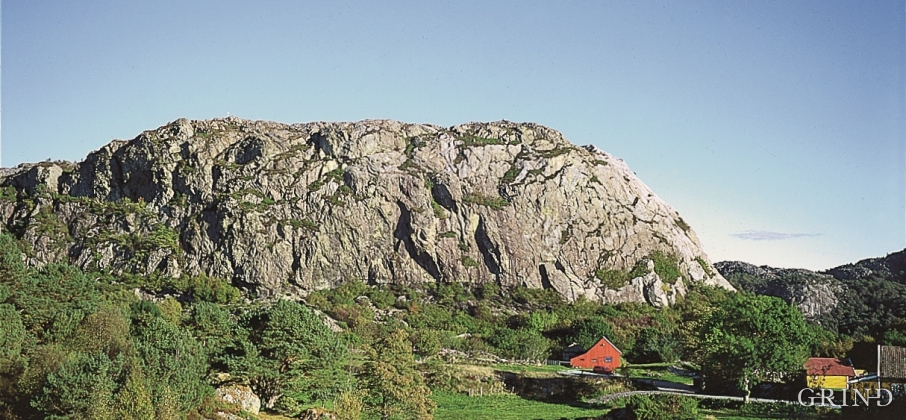Published: 21.07.2015 | Author: Haakon Fossen
Bergesfjellet Mountain, one of nature's forgotten creations, with an origin not unlike that of Hårteigen on Hardangervidda. (Svein Nord)
Both in its appearance and origin, Bergesfjellet mountain resembles Hårteigen on Hardangervidda, even though Hårteigen is a bit bigger.
At Berge it as if nature has forgotten a piece of the gabbro that once covered the entire area. This gabbro once belonged to the old sea floor from which Bømlo is formed. During the mountain-building process the gabbro was thrust over a younger limestone and phyllite.
In the summer of 1882 the geologist pioneer Hans Reusch found fossils in the limestone, among others the shell remains of brachiopods that lived in a shallow sea about 450 million years ago. It is unbelievable that these fossils are preserved, considering the enormous pressure the limestone was exposed to when the gabbro was thrust over. Since the gabbro was thrust over the limestone after the fossils were deposited, the tectonic activity must have occurred later than 450 million years ago.
- Brekke, H. 1983. The Caledonian geological patterns of Moster and Southern Bømlo: evidence for Lower Palaeozoic magmatic arc development. Cand. real. avhandl. UiB 1983.
- Reusch, H. 1888. Bömmelöen og Karmöen med omgivelser. Geologiska Föreningen i Stockholm Förhandlingar 10:392–396.




